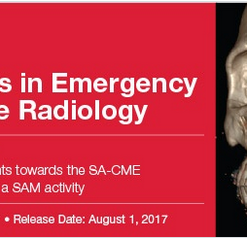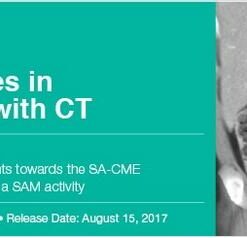VIDEO MEDICAL
VIDEO MEDICAL
Introduction
Are you looking for ways to make learning fun and engaging? Video Edusymp is the perfect solution! With its innovative approach to education, Video Edusymp helps teachers and students unlock the benefits of video-based learning. From interactive lessons to personalized feedback, Video Edusymp offers a comprehensive suite of tools that make learning more enjoyable and effective. With its easy-to-use platform, teachers can create engaging lessons that are tailored to their students’ needs. And with its powerful analytics, teachers can track student progress and identify areas for improvement. Unlock the benefits of video-based learning today with Video Edusymp!
Utilizing Video to Enhance Learning Experiences
Video has become an increasingly popular tool for enhancing learning experiences in the classroom. It can be used to supplement traditional teaching methods, provide visual aids, and engage students in a more interactive way. Utilizing video in the classroom can help to create a more engaging and stimulating learning environment, as well as provide students with a better understanding of the material being taught.
Video can be used to supplement traditional teaching methods by providing visual aids that can help to explain concepts more clearly. For example, videos can be used to demonstrate how certain processes work or to show examples of real-world applications of the material being taught. This can help to make the material more relatable and easier to understand. Additionally, videos can be used to introduce new topics or review previously covered material.
Video can also be used to engage students in a more interactive way. For example, videos can be used to facilitate discussions or debates among students. This can help to foster critical thinking skills and encourage students to think more deeply about the material being taught. Additionally, videos can be used to provide students with opportunities to practice their skills in a safe and controlled environment. This can help to build confidence and allow students to gain a better understanding of the material.
Finally, video can be used to provide students with a more immersive learning experience. For example, videos can be used to take students on virtual field trips or to explore different cultures and environments. This can help to broaden students’ perspectives and give them a better understanding of the world around them. Additionally, videos can be used to provide students with access to experts in various fields, allowing them to learn from professionals in their chosen field.
Overall, utilizing video in the classroom can be a powerful tool for enhancing learning experiences. It can be used to supplement traditional teaching methods, provide visual aids, and engage students in a more interactive way. By taking advantage of the many benefits that video has to offer, educators can create a more engaging and stimulating learning environment for their students.
Exploring Creative Ways to Incorporate Video into the Classroom
Incorporating video into the classroom can be a great way to engage students and make learning more interactive. Video can be used to introduce topics, provide visual demonstrations of concepts, and even supplement traditional lectures. With the right approach, video can be an effective tool for teaching and learning.
One of the most common ways to incorporate video into the classroom is through the use of educational videos. These videos can be used to introduce topics, explain concepts, or provide visual demonstrations of how things work. Educational videos can also be used to supplement traditional lectures, allowing students to review material at their own pace. Additionally, educational videos can be used to provide additional context and background information on a topic.
Another creative way to incorporate video into the classroom is through the use of student-created videos. This can be a great way to get students involved in the learning process and allow them to express their creativity. Students can create videos that explain concepts, demonstrate experiments, or even present their own research. This can be a great way to get students engaged and excited about learning.
Video can also be used to bring the outside world into the classroom. By using videos from news outlets, documentaries, or other sources, teachers can provide students with real-world examples of the topics they are studying. This can help to make learning more relevant and engaging.
Finally, video can be used to facilitate collaboration between students. By having students create videos together, they can learn from each other and develop their communication and teamwork skills. This can be a great way to foster collaboration and build relationships between students.
Overall, there are many creative ways to incorporate video into the classroom. From educational videos to student-created projects, video can be a great tool for teaching and learning. By taking advantage of these creative approaches, teachers can make learning more engaging and effective.
Leveraging Technology to Engage Students in the Learning Process
Strategies for Developing Interactive Video-Based Lessons
Interactive video-based lessons are an effective way to engage students in the learning process. They provide a visual and auditory experience that can help students better understand concepts and retain information. With the right strategies, teachers can create interactive video-based lessons that will keep students engaged and motivated to learn.
The first step in developing interactive video-based lessons is to plan out the content. Teachers should consider what topics they want to cover and how they will present them. This includes deciding on the length of the video, the type of visuals to use, and the types of activities or questions to include. It’s also important to consider the level of interactivity that will be included in the lesson.
Once the content has been planned, teachers should create a script for the video. This should include all of the necessary information as well as any activities or questions that will be included. The script should also include instructions for the students on how to interact with the video.
When creating the video, teachers should use visuals that are engaging and relevant to the topic. This could include images, diagrams, animations, or videos. It’s also important to make sure that the audio is clear and easy to understand.
Once the video has been created, teachers should add interactive elements to it. This could include quizzes, polls, or other activities that allow students to interact with the video. These activities should be designed to reinforce the concepts that were presented in the video.
Finally, teachers should review the video before showing it to students. This will ensure that all of the content is accurate and that the interactive elements are working properly.
By following these strategies, teachers can create interactive video-based lessons that will engage and motivate students. These lessons can help students better understand concepts and retain information, making them more successful in their studies.
Best Practices for Integrating Video into Educational Curriculum
Integrating video into educational curriculum is an effective way to engage students and enhance their learning experience. Video can be used to supplement traditional teaching methods, such as lectures and readings, or it can be used as the primary source of instruction. When used properly, video can help students better understand complex concepts, increase their motivation to learn, and improve their overall academic performance.
When incorporating video into the classroom, there are several best practices that should be followed. First, teachers should select videos that are relevant to the subject matter and appropriate for the age group of the students. Videos should also be engaging and visually stimulating, with clear audio and visuals. Additionally, teachers should provide students with a brief overview of the video before they watch it, so that they know what to expect and can focus on the key points.
In addition to selecting appropriate videos, teachers should also consider how they will use the video in the classroom. For example, teachers may choose to show the entire video in one sitting, or they may break it up into smaller segments and discuss each segment separately. They may also assign students to watch the video outside of class and then discuss it in class.
Finally, teachers should ensure that students have the opportunity to interact with the video. This could include having students answer questions about the video, complete activities related to the video, or create their own videos based on the content. By providing students with opportunities to interact with the video, teachers can ensure that students are actively engaged in the learning process.
By following these best practices, teachers can effectively integrate video into their educational curriculum and create a more engaging and interactive learning environment for their students.
Conclusion
Video Edusymp is an innovative and engaging way to make learning fun. It provides a unique platform for teachers, students, and parents to collaborate and create interactive lessons that can be accessed from anywhere. With its easy-to-use tools, it allows users to customize their learning experience and unlock the benefits of video-based education. By using Video Edusymp, educators can create engaging and interactive lessons that will help students learn more effectively and efficiently. Additionally, parents can monitor their children’s progress and ensure they are getting the most out of their educational experience. Unlock the Benefits of Video Edusymp today and make learning fun and engaging!



